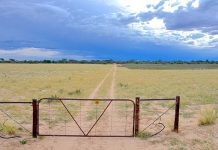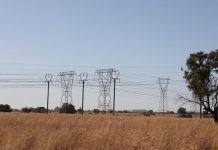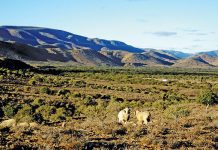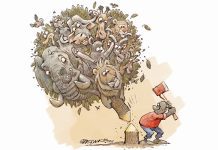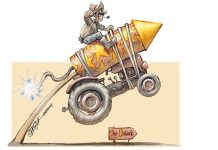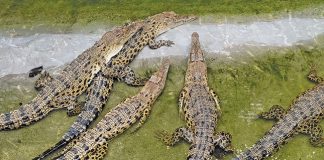The Department of Water and Environmental Affairs draft proposal to base its invasive species management policy on maps reflecting the natural distribution range of 21 indigenous mammal species commonly translocated by the wildlife industry has met with opposition from game ranchers. The species include impala, springbok, white rhino, eland and the Cape buffalo.
According to the National Environmental Management: Biodiversity Act, indigenous species are those that occur or have historically occurred naturally within the borders of the country. The distribution maps were developed using the historical distribution of mammals (derived from rock paintings and early travel accounts) and vegetation types to show habitat sustainability to indigenous mammals.
Biodiversity
The reasoning is that, while the development of capture and transport techniques has allowed the safe translocation of game across the landscape, facilitating re-establishment into areas from which they had disappeared, it has also resulted in the spread of certain game species into areas where they did not occur naturally. This could lead to undesirable genetic changes, the introduction and spread of harmful diseases or vectors of disease, and damage to the receiving environment and habitats. The authorities note, too, that South Africa, having signed a number of international conventions, has an obligation to conserve its biodiversity.
Unreliable
Game ranchers argue that these maps are unreliable indicators of game movement over time, and that the department lacks the capacity to implement legislation stemming from its goal of restricting the movement and trade in listed animals. They are also worried that the economic implications for ranchers, their staff and the industry at large, have not been studied. They point out that it is not known what effect the legislation will have on the very species and habitats it seeks to protect.
Ranchers want more meaningful interaction with the department such as one-on-one workshops and follow-up sessions. The standard communication through impersonal emails and press releases between the department and farmers is not seen as sufficient. Their message is that good management, based on practical experience, not legislation, is the key to successful mammal ranching. Bushmen paintings, questionable pioneer observations or the diaries of voortrekkers cannot be used to legislate modern game management.
Ranchers’ views
The following are some comments on the subject from Eastern Cape game ranchers:
- When the theory of basing game ranching on distribution maps was first raised a few years ago, the emphasis was on protecting the habitat, but this was changed later to ‘protecting’ the species. The reason for this, apparently, was that the department did not know how to handle the ‘What about the goats, sheep and cattle?’ argument. If certain game species are to be banned, then the same should surely apply to domestic livestock, most of which are alien in origin and capable of transforming veld through their grazing habits.
- The ideologies of bureaucrats, academics and animal rights activists have a negative impact on the ability of game ranchers and landowners to do business. The proposed translocation policy neither respects nor acknowledges wildlife conservation efforts and achievements of local and international ranchers and hunters.
- Not long ago, landowners were able to buy what are now described as alien species from the said department, previously known as the Department of Environmental Affairs and Tourism, and even receive departmental permits to transport and relocate them to what are now termed non-historical distribution ranges. These same species were moved around the country with the support of the state, and established and marketed successfully via hunting and live capture. Now government is back-tracking on this, sweeping under the table all past conservation successes by private enterprise. The 1897 rinderpest, which decimated game in South Africa, reduced the Eastern Cape kudu to two small groups at Glenconnor and Grahamstown. Their absence in the region resulted in the belief that the Uitenhage and Port Elizabeth municipalities, for example, were not historical natural distribution ranges for these antelope. However, kudu populations bred up and expanded their ranges so that these districts are now regarded as kudu habitat. This illustrates how questionable some ideological thinking, which would restrict indigenous mammals to certain ranges, can be.
- Wild animal populations will grow or shrink, according to available habitat and as vegetation changes over very long periods. New Zealand is a good example: at one time the volcanic hills housed unpalatable shrub which changed into edible grasses that now accommodate deer, sheep, cattle, and goats. New Zealand today exports the most venison and lamb in the world – after never having had any indigenous game or livestock.
- Where permits will be needed for moving game, the department will require a risk assessment for each case. But who will assess the risk, and at what cost will this procedure be carried out? The issuing of more permits will be an extra burden on officials.
Species exclusion and inclusion
Some comments regarding specific species include:
- There is no reason to exclude waterbuck from the Eastern Cape, where they thrive. Few farmers would willingly introduce species that would harm their businesses. In any case, the department does not have data on what animals are found where and what their numbers are throughout South Africa. Nobody knows how many waterbuck there are in the Eastern Cape or how many nyala there are in the Free State, or even how many free-ranging fallow deer there are in the Western Cape. Far-reaching decisions about controlling ranching should be made based on hard facts.
- Waterbuck, nyala, bushbuck, kudu and impala all roam together in the Kruger National Park, and there is no reason why they should be restricted in the Eastern Cape.
- No study has shown any species to be endangered by hybridisation.
- Indigenous animals should not be treated as aliens. Legislation that prevents them from being moved around within our borders will deprive landowners and their staff of their right to earn a living from the country’s surplus wild animals.
The Professional Hunters’ Association of South Africa (Phasa) has described the definition for an alien species as flawed and suggested it should be re-defined as a species not indigenous to S Africa. This would make the maps unnecessary. According to Phasa, as users of the end product, their members’ clients should be the ones to decide whether they would prefer hunting a species in the area where it had ‘historically’ occurred, or in an area where the species was introduced.
(The department’s maps on its website allows ranchers to zoom into any farm or area by co-ordinates or vegetation types.)
The views expressed in our weekly opinion piece do not necessarily reflect those of Farmer’s Weekly.

